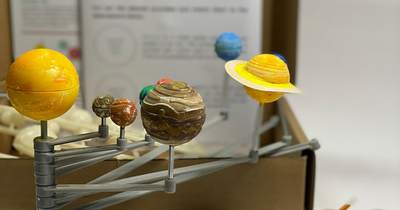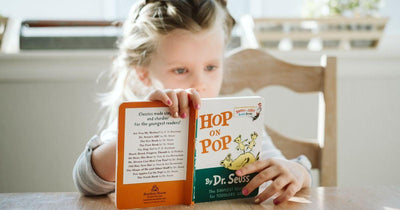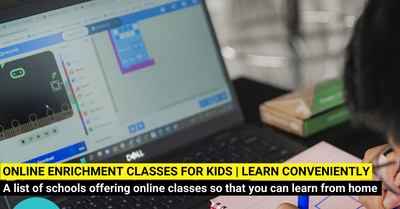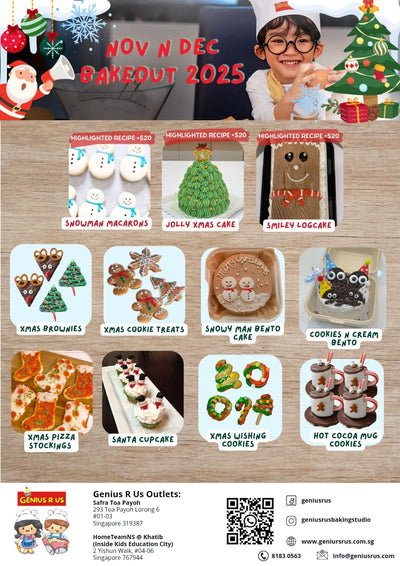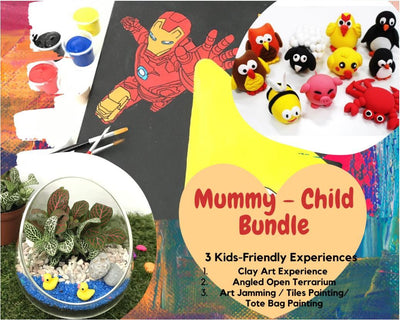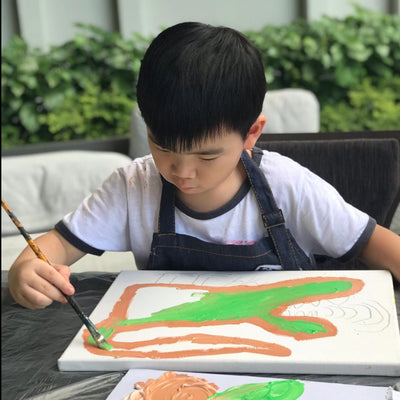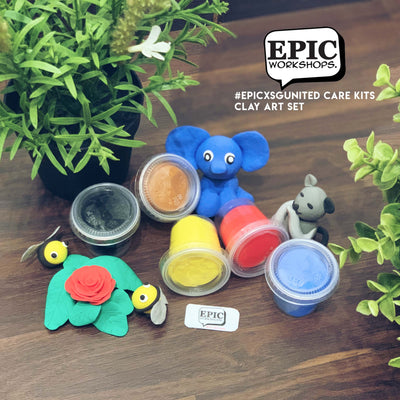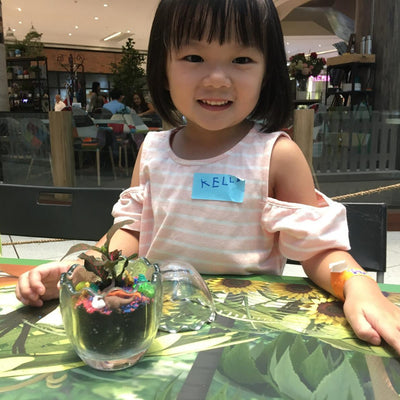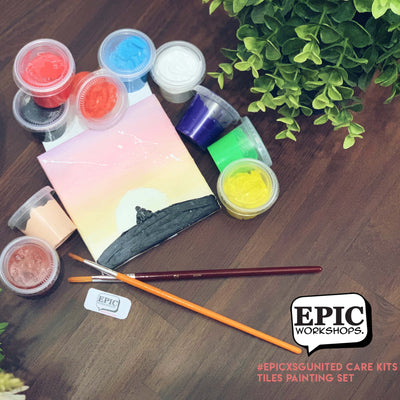
Source: Laurence Dutton/Imagebank/Getty via The Irish Times
Here are 7 fun and easy science experiments you can conduct with your kids in the comfort of your home! So, whip out your lab coats (aprons would do just fine as well) and get cracking!
1. Invisible Ink
Difficulty level: Easy
Mess level: Low
You will need: Lemon, water, teaspoon, saucer, cotton bud, white paper, and lamp
If your little ones ever need to send a secret missive to their friends or you, this one will come in handy.

Source: Steemit/bluepanda
Squeeze the lemon juice into a saucer and add in a few drops of water, mixing well with a spoon. Dip a cotton bud into the mixture and write your message on the white paper. Once it dries your message would have disappeared! And when you heat the paper by holding it near a light bulb, the words become visible!
2. Volcano Eruption
Difficulty level: Medium
Mess level: High
You will need: Flour, salt, cooking oil, water, food coloring, baking soda, vinegar, water, liquid detergent, large bowl, clean plastic bottle, and baking pan
While jumping from couch to couch, playing ‘the floor is lava!’ fun, watching actual lava might turn out to be more fun. By “actual lava”, I’m talking about the eruption of a more house-safe and people-friendly volcano.

Source: 123homeschool4me
For that, you have to mix 6 cups of flour, 2 cups of salt, 4 tablespoons of cooking oil, and 2 cups of water in a large bowl. Use your hands to mix the ingredients until they’re smooth and firm. On a baking pan, stand the plastic bottle and mold the dough around the bottle up to the neck, making sure not to drop any into the bottle.
Then fill the bottle almost to the top with warm water, add in drops of food coloring and squeeze in 6 drops of liquid detergent. Add 2 tablespoons of baking soda before slowly pouring vinegar into the bottle. Step back and watch the “lava” flow out!
Writer’s tip: Before working on your lava, you can add in little details to your volcano, like plastic models of dinosaurs, people and trees, if you have them on hand.
3. Second-hand Paper
Difficulty level: High
Mess level: High
You will need: Color chalk, water, cooking oil, vinegar, white paper, newspaper, plastic cup, rolling pin, zip lock bag, plastic spoons, and a large plastic bowl
You don’t need industrial-sized machines to create paper. While the process is a little tedious, you can actually make your own paper at home. Here’s a little easier one.

Source: Babble Dabble Do
First, fill a large bowl with water and add in 2 tablespoons of vinegar then place it in the center of a spread sheet of newspaper.
Place your colored chalk into separate zip lock bags and crush it into a fine powder with a rolling pin. Tip each color into separate cups, adding 1 tablespoon of oil into each cup. Stir well with a spoon and pour the contents into the bowl of water. It should form large colored pools on the surface of the water.
Next carefully lay each piece of white paper on the top of the water, lift it out and place them on another sheet of newspaper to dry, which will take about a day.
Once it’s dry, you can gently wipe off the chalk grains with a paper towel and you’ll be left with swirl, streaky-patterned papers. Whether you want to use this paper for your next art project or as a wrapping paper, it’s up to you!
4. Plastic
Difficulty level: High
Mess level: Medium
You will need: Full cream milk, vinegar, measuring cup, small saucepan, small jar, and tea strainer
Did you know that plastic can come from milk as well? Don’t just take my word for it, here’s a chemistry experiment you can conduct to find out for real!
In a small saucepan, pour in ½ cup milk and heat it until it simmers. When the milk turns lumpy, add in 3 teaspoons of vinegar and continue adding until the mixture starts to gel. Take the pan off the heat and pour it through a tea strainer then tilt the lumps into a jar, letting it cool.
After the lumps have cooled, which will take about an hour or so, drain any remaining water and what will you be left with? Plastic! You can use it to make little ornaments and charms.

Source: Science Buddies
5. Thermometer
Difficulty level: Medium
Mess level: Low
You will need: Cold water, food coloring, clear bottle/small jar, clear straw, spoon, modeling clay/plasticine, and marker

Source: SKrafty
You can show your little ones how thermometers work with this one.
First, you pour cold water into a clear bottle, about ¼ full and add in a few drops of food coloring. Next, get a glob of clay/plasticine and mold it around the middle of a straw. Now insert the straw in the bottle, making sure it doesn’t touch the bottom. Seal the neck of the bottle with a bit more clay, ensuring the straw stays in place.
Blow gently into the straw so the water rises and when it’s halfway up, mark the line with a marker. The height indicates room temperature. Wrap your hands around the bottle and watch the mixture rise according to your temperature.
Fun fact: The first modern thermometer was invented by scientist and inventor Daniel Gabriel Fahrenheit in the early 18th century.
6. Cloud Nine
Difficulty level: Medium
Mess level: Medium
You will need: White chalk, water, large jar with lid, zip lock bag, round balloon, scissors, and thick rubber band
Floating in and out, clouds, formed when water vapor cools, are something we’re very familiar with but did you know that you can make your own cloud nine in your kitchen? Not the proverbial cloud.
For this one, you have to pour a little water into a jar, screw on the lid tightly and leave it aside for about 20 minutes. Cut off the neck of a balloon and keep it ready.
Place white chalk into a zip lock bag, crushing it into a fine powder then tip it into the jar. Immediately cover the jar with the balloon, stretching it tight across the top and secure it with a rubber band.
Have your little ones press down with their fist (or you can do it) for half a minute before taking away the balloon and voilà! You’ve got your very own cloud!
7. Dinosaur Tracks
Difficulty level: Medium
Mess level: Medium
You will need: Damp used coffee grounds, cold coffee, flour, salt, baking paper, bowl, wooden spoon, and rolling pin.
Have you ever wondered how is it that despite having lived eons ago dinosaur footprints are still left behind? What happens it that when the track, left on damp mud, slowly dries, it gets covered by other sediments, becoming preserved in time. These are called imprint fossils.
Here’s an experiment for you to experience it.
In a large mixing bowl, add in the damp coffee grounds, cold coffee, flour, and salt, and mix thoroughly. If it looks like a muddy clay, you’re going in the right direction. Scoop up a handful of the mixture onto a baking paper and use a rolling pin to roll it into a ½ inch think “clay”.
Now press your palm into the clay and once you’re satisfied, leave it out to dry over the next few days. Your hand would have made a print and it would have stayed on the clay as it dried.

Source: Education.com
Writer’s tip: For a bit more fun, you can even create a dinosaur name for yourself to name your track by taking the first two letters of your name and adding ‘-osaurus’ to it.


